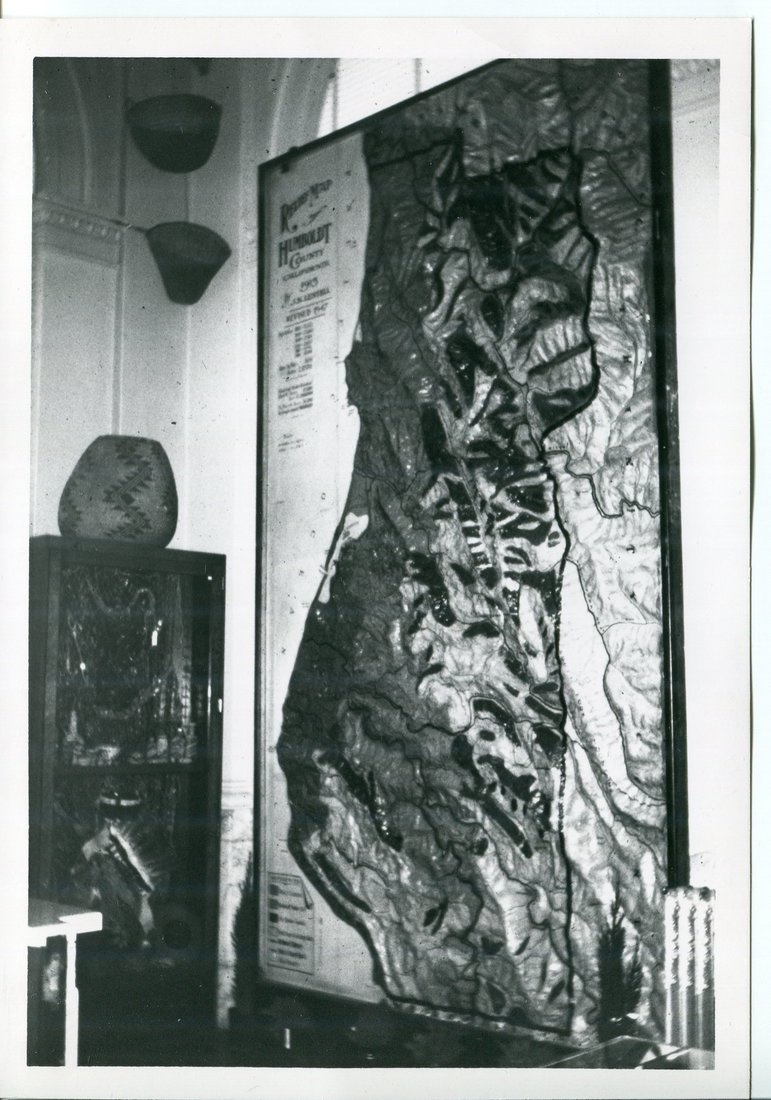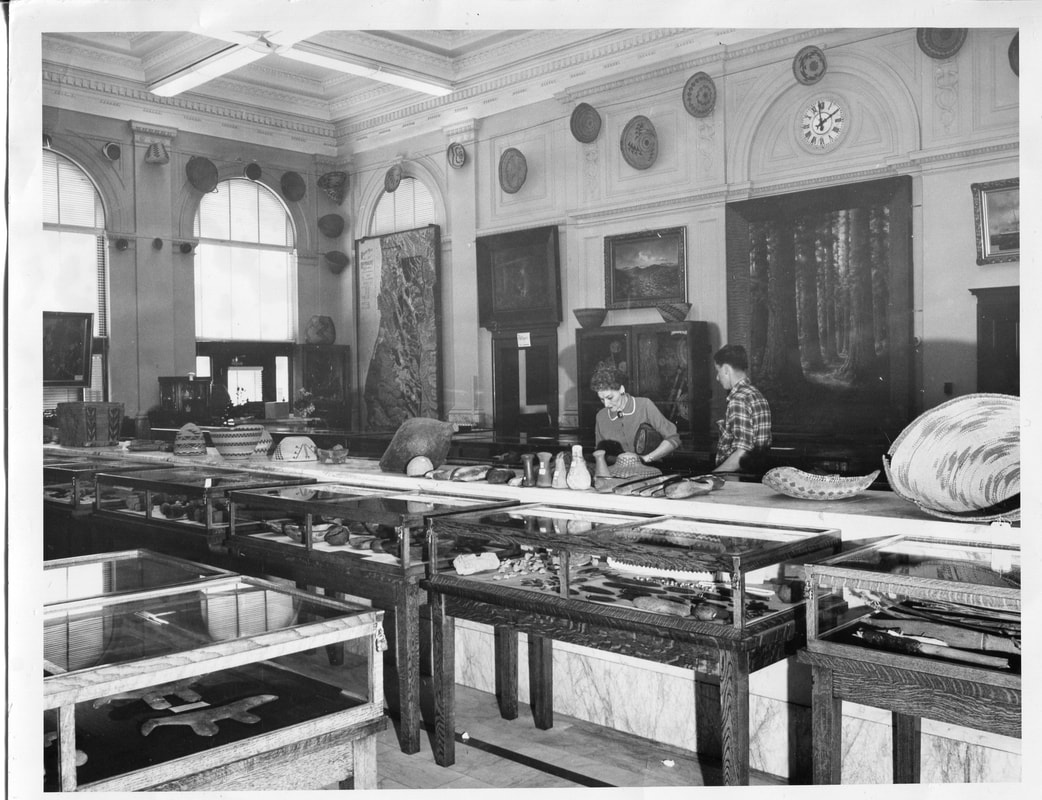| Chances are, if you've visited the museum, you've seen the Lentell Map. It is a 14-foot-tall papiermache map of Humboldt County, first constructed in 1915 and updated in 1947. It is one of the most memorable items in the museum and is greatly cherished by visitors. This map, with it's striking appearance, has an incredible story to go along with it! The Lentell Map Known as the Lentell Map, this 14-foot tall, 7 feet 10-inch-wide map was housed at the Humboldt County exhibit during the Panama Pacific International Exposition in San Francisco. The map was constructed by engineer J. N Lentell of Eureka for the Eureka Development Association to display at the Exposition. At the time, maps like these would be made with Plaster of Paris, making the map incredibly hard to transport, especially over the difficult terrain or rough seas from Humboldt County to San Francisco. Lentell instead built the map out of strengthened papier mache, a material that contemporary journalists claimed, “cannot be broken with a hammer”. The map was updated in 1947 to show increasing development of the area, including the new highway and railroads. It has been on permanent exhibit at the Clarke Historical Museum since 1960 and has become a landmark in the museum itself. During events like Arts Alive, locals and visitors alike can be spotted pointing out various location on the map. |
Humboldt County and the Panama Pacific International Exposition
Besides having its very own day, Humboldt County had its own exhibit at the Exposition. The exhibit was housed in a 20-foot-tall by 20 feet long log and stump house, which you can see part of in the photo below. The redwood building held redwood artwork, examples of local industry, and the Lentell Map. The building was used to promote tourism to Humboldt County ahead of the completion of the Northwestern Pacific Railroad which connected Humboldt to San Francisco at the end of 1914.





 RSS Feed
RSS Feed